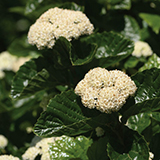Growing Shrubs in Clay Soil
Clay soil is much maligned by gardeners and homeowners everywhere, and no wonder: it’s heavy, sticky, and difficult to work in. But the simple fact is that clay soil gets its bad rap because it’s hard on people - from a plant’s point of view, clay soil is usually not problematic at all.
In fact, clay soils offer plants two major advantages over other soil types: they hold water well, minimizing drought stress, and are abundant in nutrients essential for plant growth. So, if you’ve been struggling to achieve your dream garden or landscape in clay soil, cheer up! Here are six tips to make it easier on yourself and ensure a healthy, long life for everything you take the time to plant.
- Check drainage. While clay soils’ ability to retain water usually benefits plants, in some cases, this can be too much of a good thing. Before planting anything, check how well your soil drains by digging a hole about the size of the plant (a minimum of 10”/25cm wide and deep) and fill it to the top with water. Come back and check on it every 30 minutes or so. The faster it disappears, the better your drainage is. If there is still water in the hole after four hours, you have poorly drained soil and will need to select species that can tolerate these conditions, like itea, dogwood, winterberry holly, and summersweet, to name a few.

Itea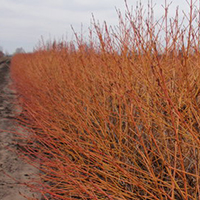
Dogwood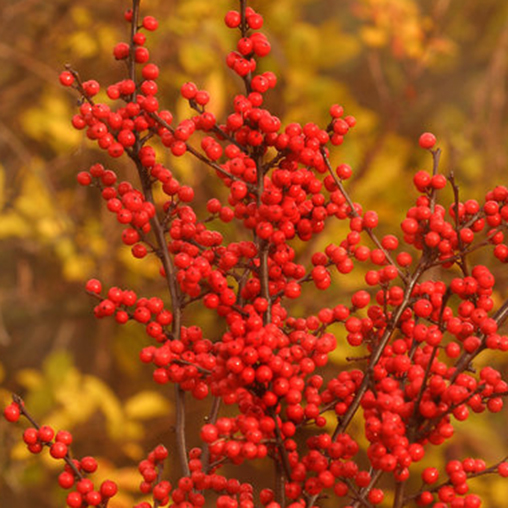
Winterberry Holly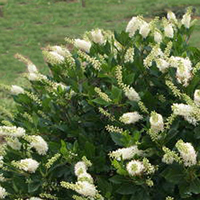
Summersweet - Start small. The worst part of clay soil is digging in it. Its weight makes planting an exhausting task, especially coupled with the need to clean soil off your shovel after every stroke. The easy way to minimize these challenges is to start with small plants so you can dig smaller holes. Look for perennials and shrubs in one and two gallon containers. With proper care and a little patience, they will grow quickly, saving you time (and money!).
- Don’t amend clay soil. Lots of people think they need to add “good” soil when they plant in their clay soil to make a happy home for their new plant. As well intentioned as this may be, it can actually increase the risk of root rot. It works like this: when you water your new plant, the water infiltrates that soft, fluffy soil in the hole very quickly, so you end up applying a fairly large volume of water. However, once the water reaches the dense clay soil around the hole, it slows to a halt. As a result, all that water sits around the roots while it waits its turn to percolate through the clay, which can lead to root rot. For this reason and more, we do not recommend that you add anything to the soil when you plant. There are a few extreme cases of clay soil, like caliche, where it is not possible to grow anything without some amendment. However, unless you know this to be the case for your area, it’s best to use only your natural clay soil. For a more in-depth look at the complications that arise from amending soil, and particularly clay soil, we recommend this article (download PDF).
- Mulch your clay soil. Mulch has myriad benefits for plants and soil: it helps regulate the temperature around the roots, minimizes water loss, minimizes soil erosion, and improves the soil as it breaks down into a top dressing of organic matter. Clay soils especially benefit from mulch because during hot, dry weather, the sun can bake exposed clay surfaces to a hard sheet. This makes re-wetting them very difficult, as the water will simply bead and splash off instead of slowly seeping into the soil. Mulch will eliminate this possibility. A good 2-3” (5-7 cm) layer of shredded bark mulch will do the trick.
- Pick the right plants. Some shrubs are especially well-suited to the challenges that clay soils can present – others, not so much. Butterfly bush, for example, is not usually a great choice for planting in clay soil because it cannot stand up to cold, wet conditions. To ensure that the effort you spend digging pays landscape dividends, look for these flowering shrubs and evergreens that happily grow and bloom in clay soils: (https://www.provenwinners.com/retailers/locate)
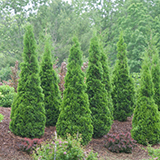 Arborvitae | 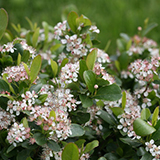 Aronia |  Buttonbush |  Coralberry |
 Cotoneaster |  Dogwood |  Diervilla |  Elderberry |
 Flowering Quince |  Forsythia |  Honeysuckle |  Juniper (well drained clay only) |
|  Ninebark | 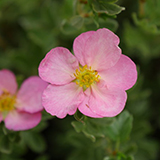 Potentilla |  Rhamnus |
| |||
Viburnum







 Rose of Sharon
Rose of Sharon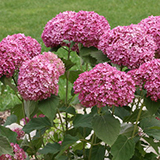 Smooth hydrangea
Smooth hydrangea Spirea
Spirea

